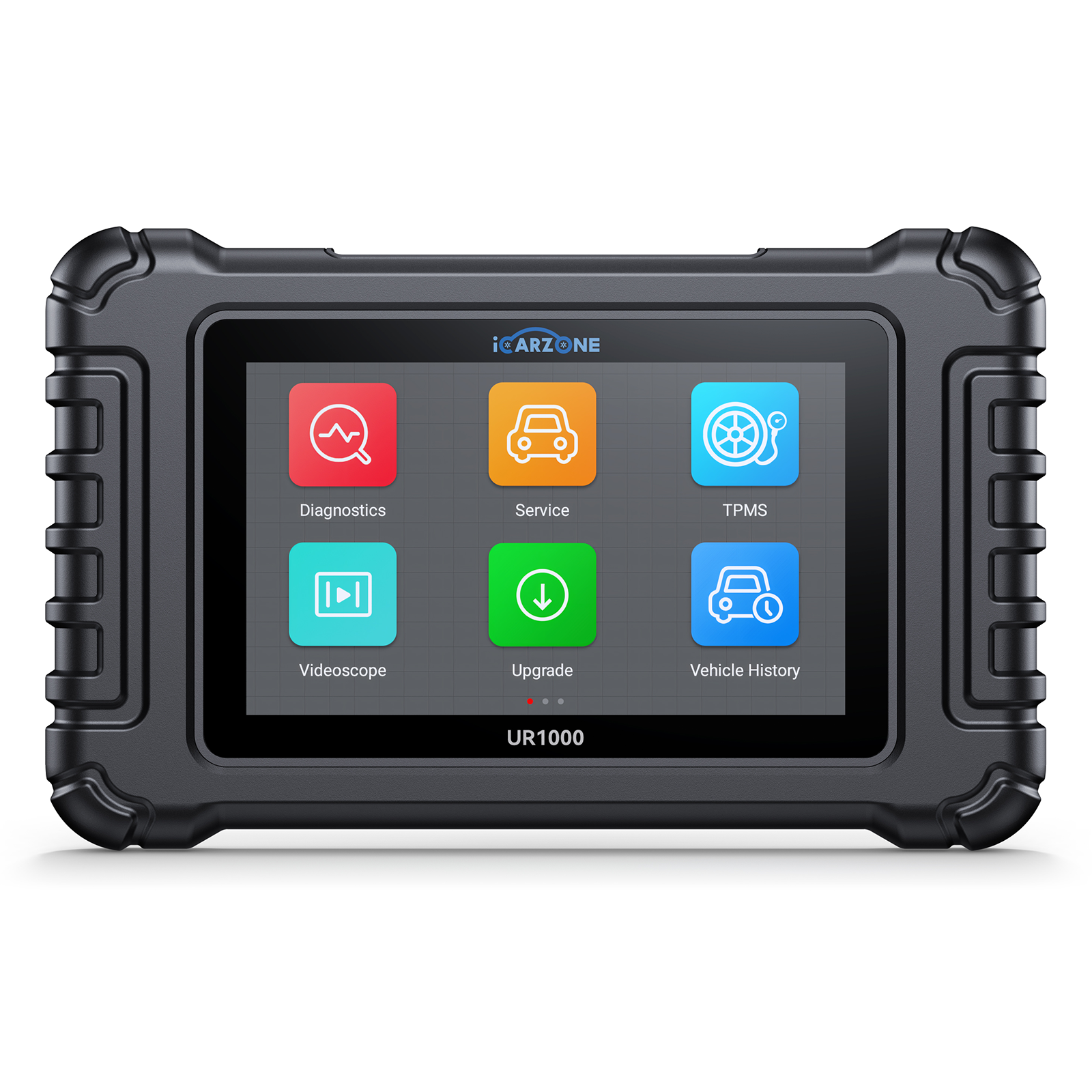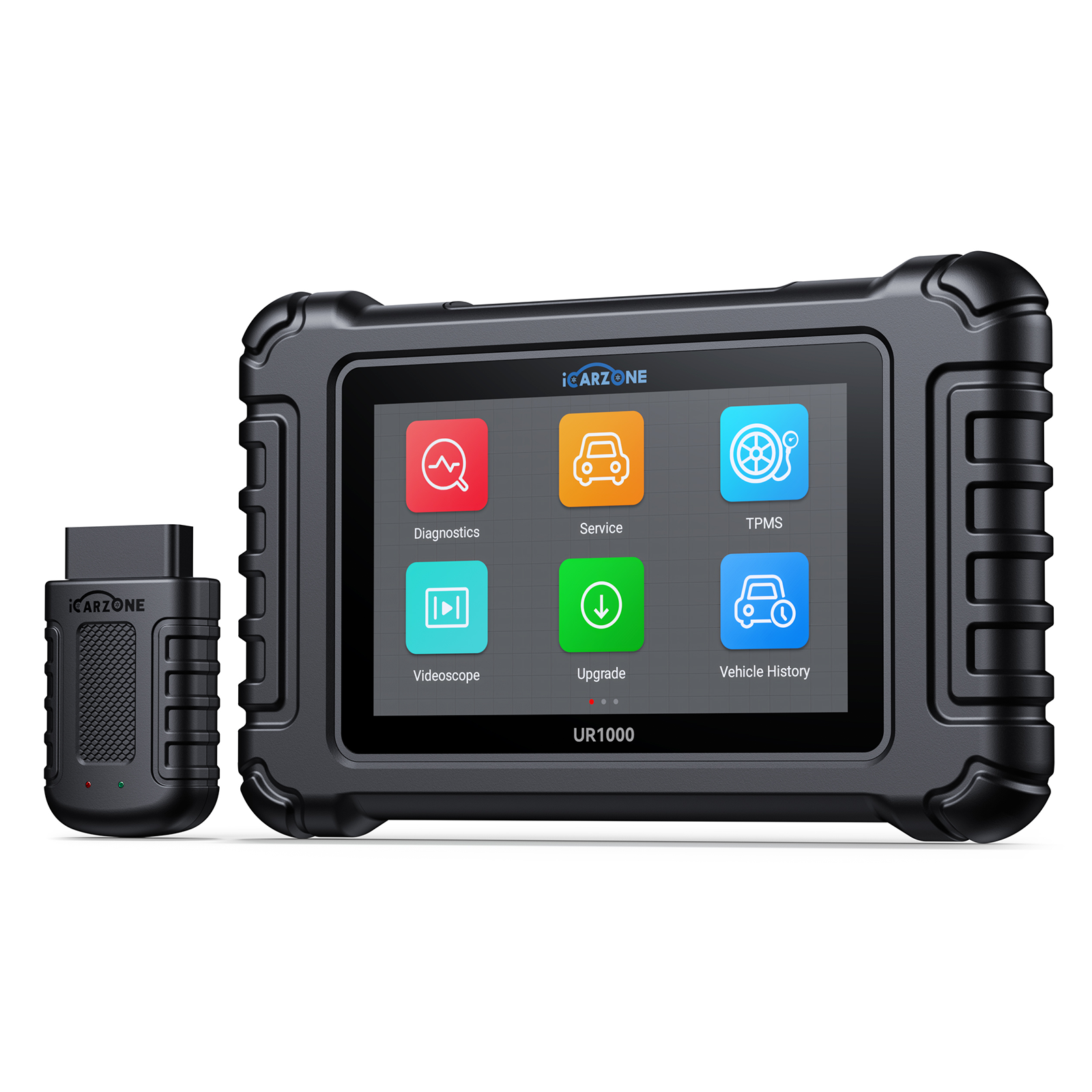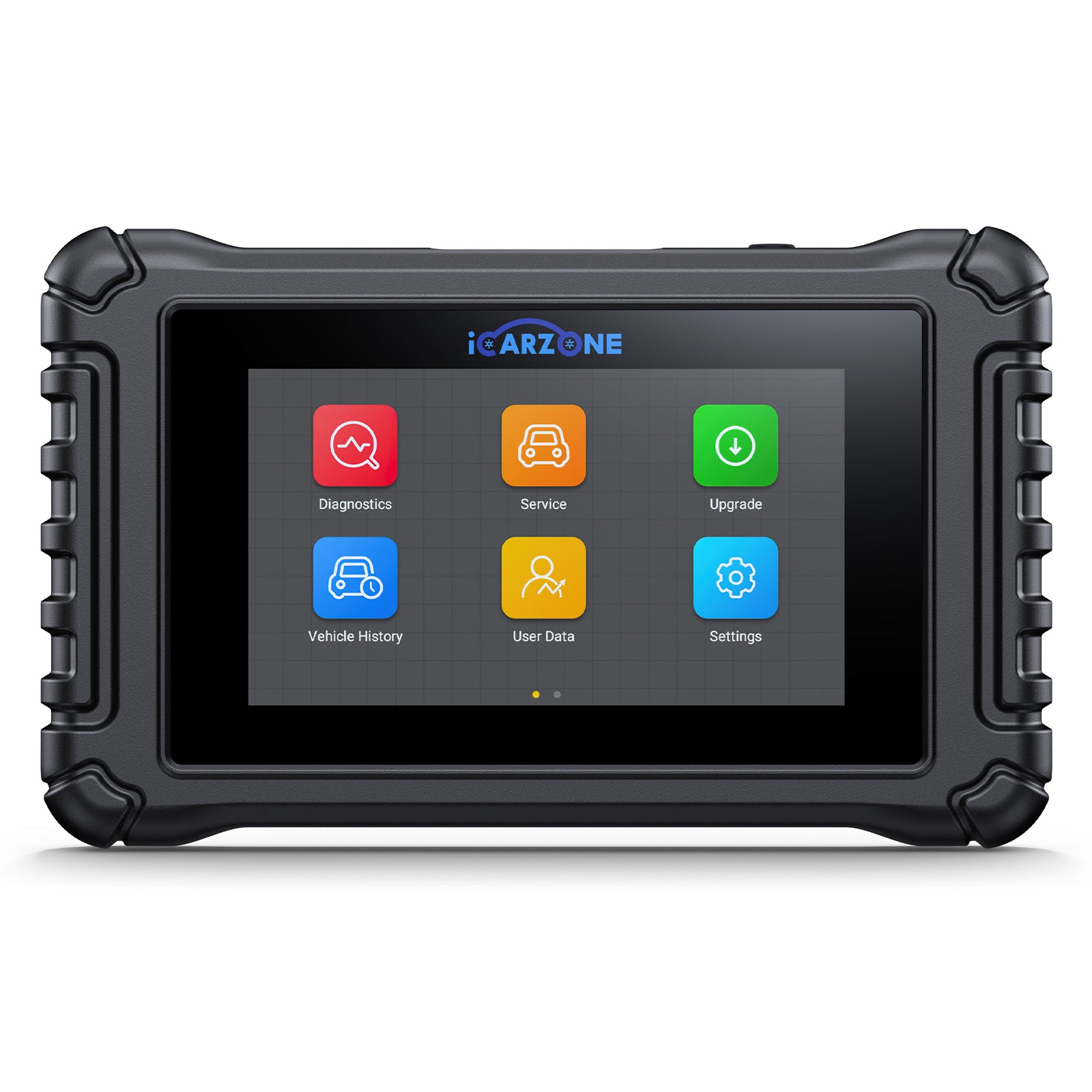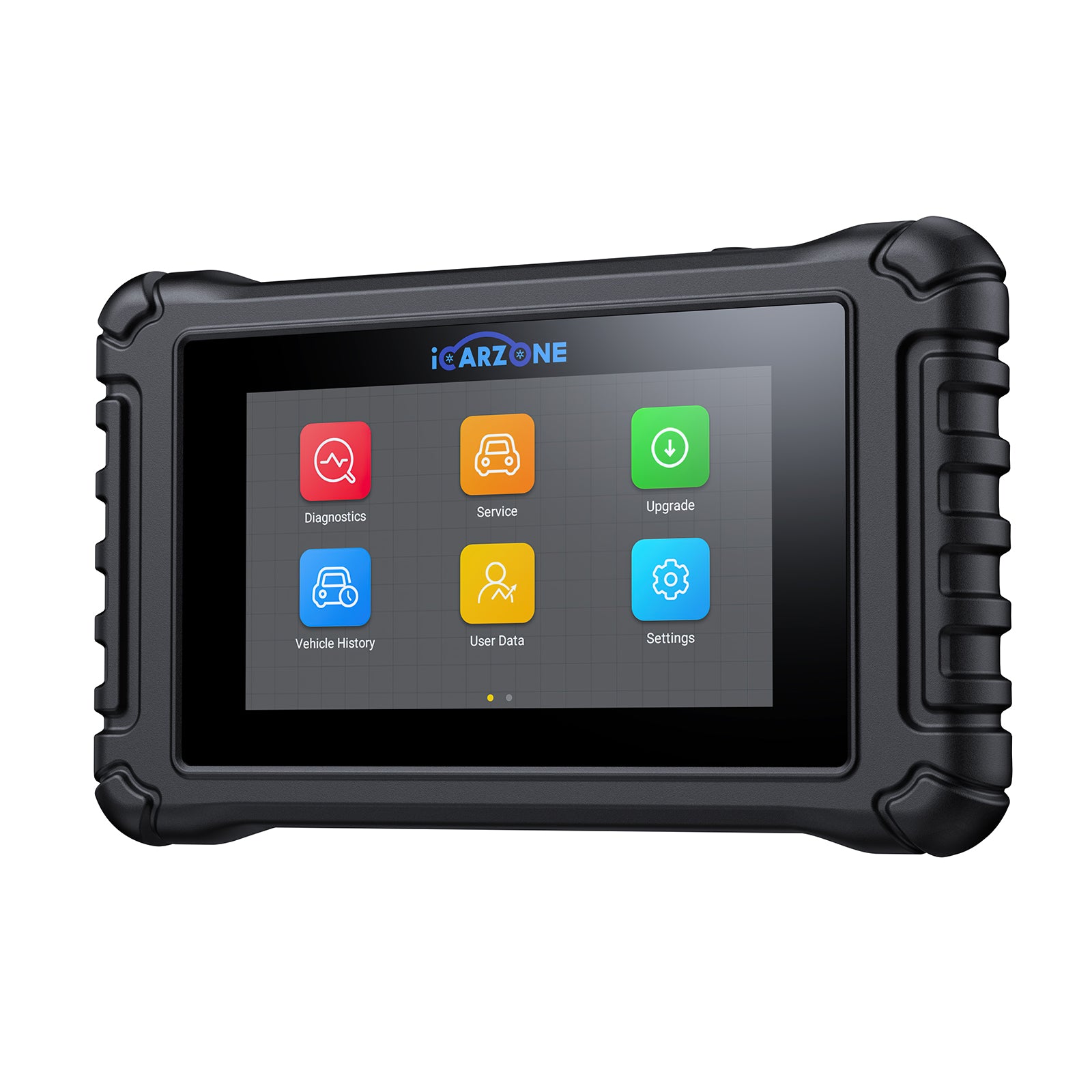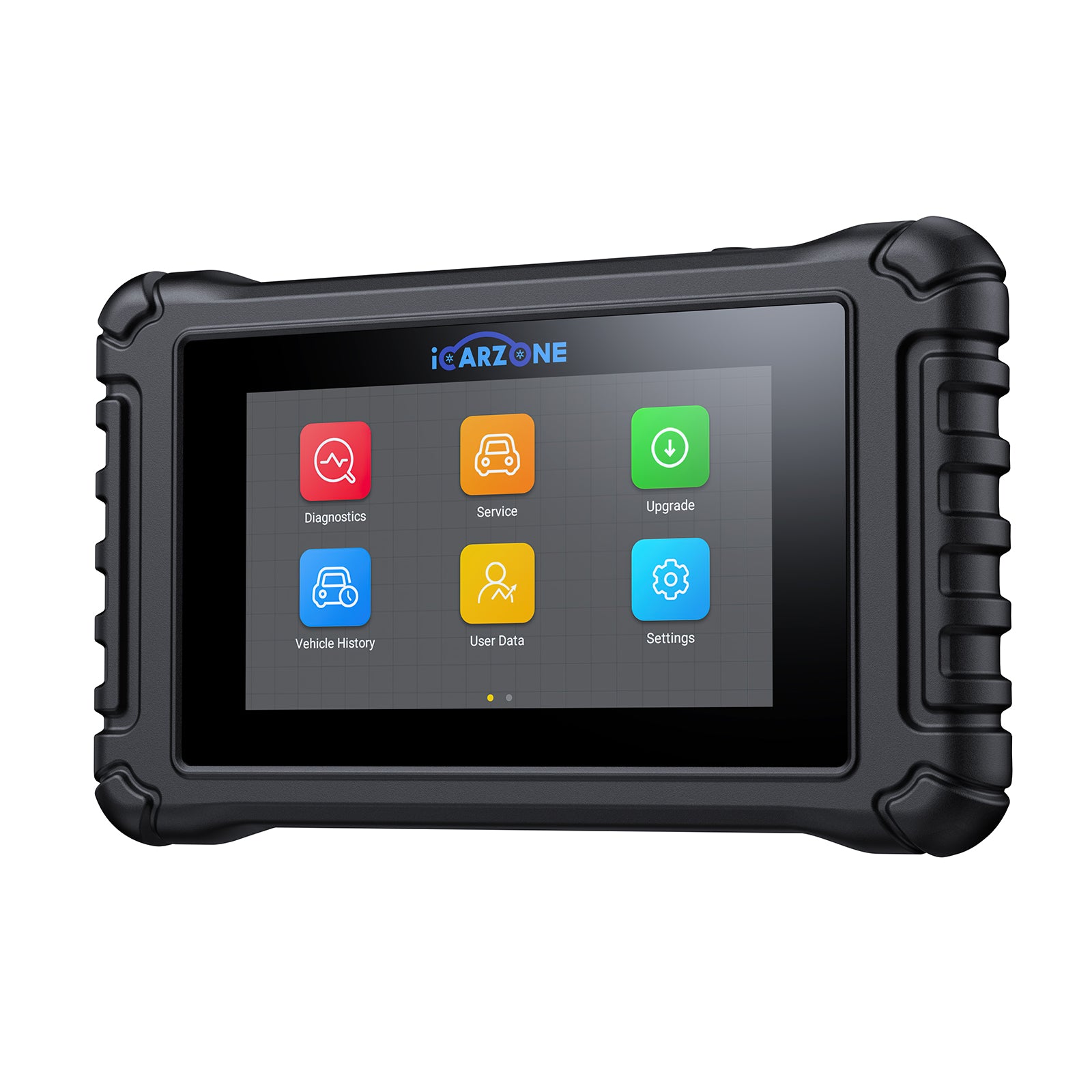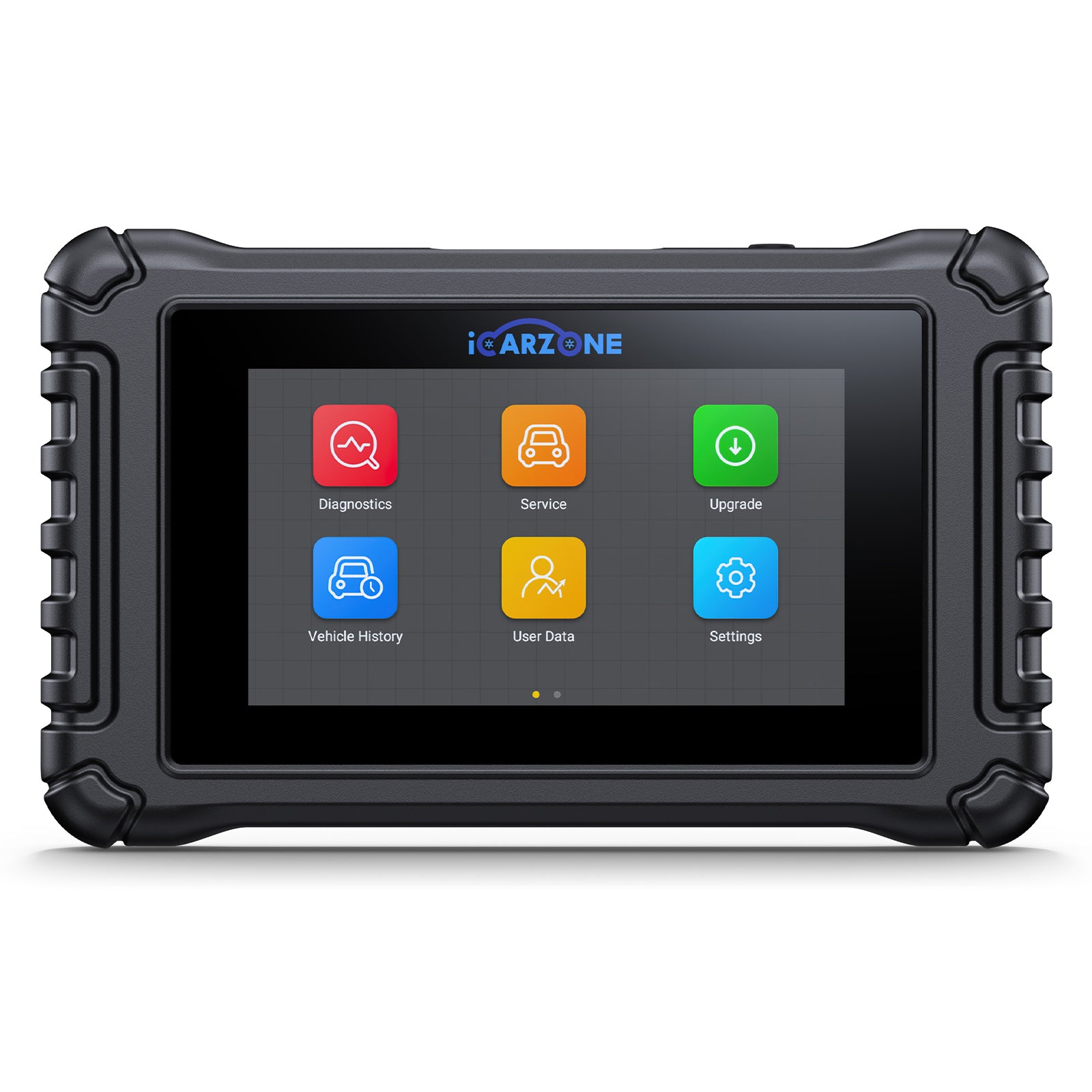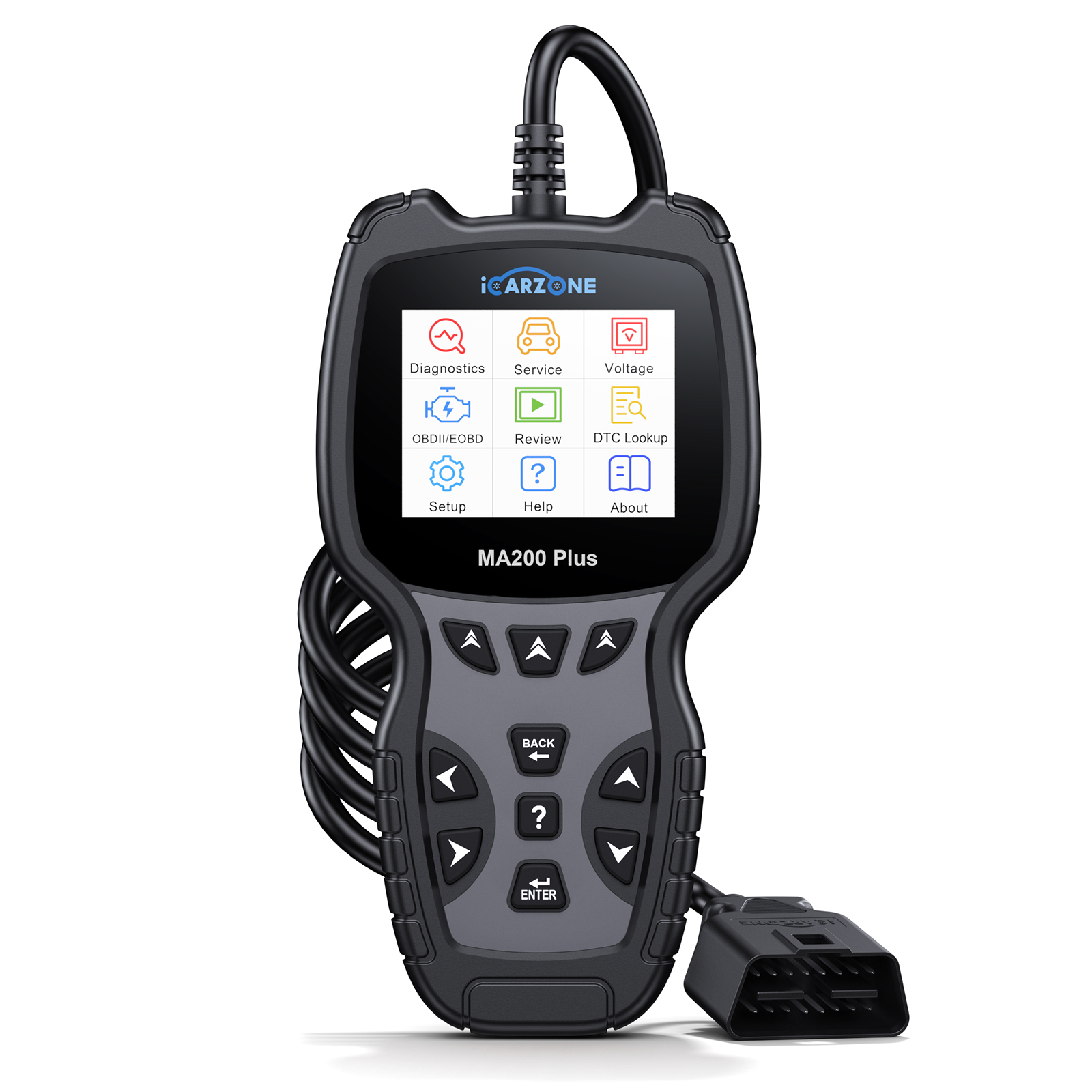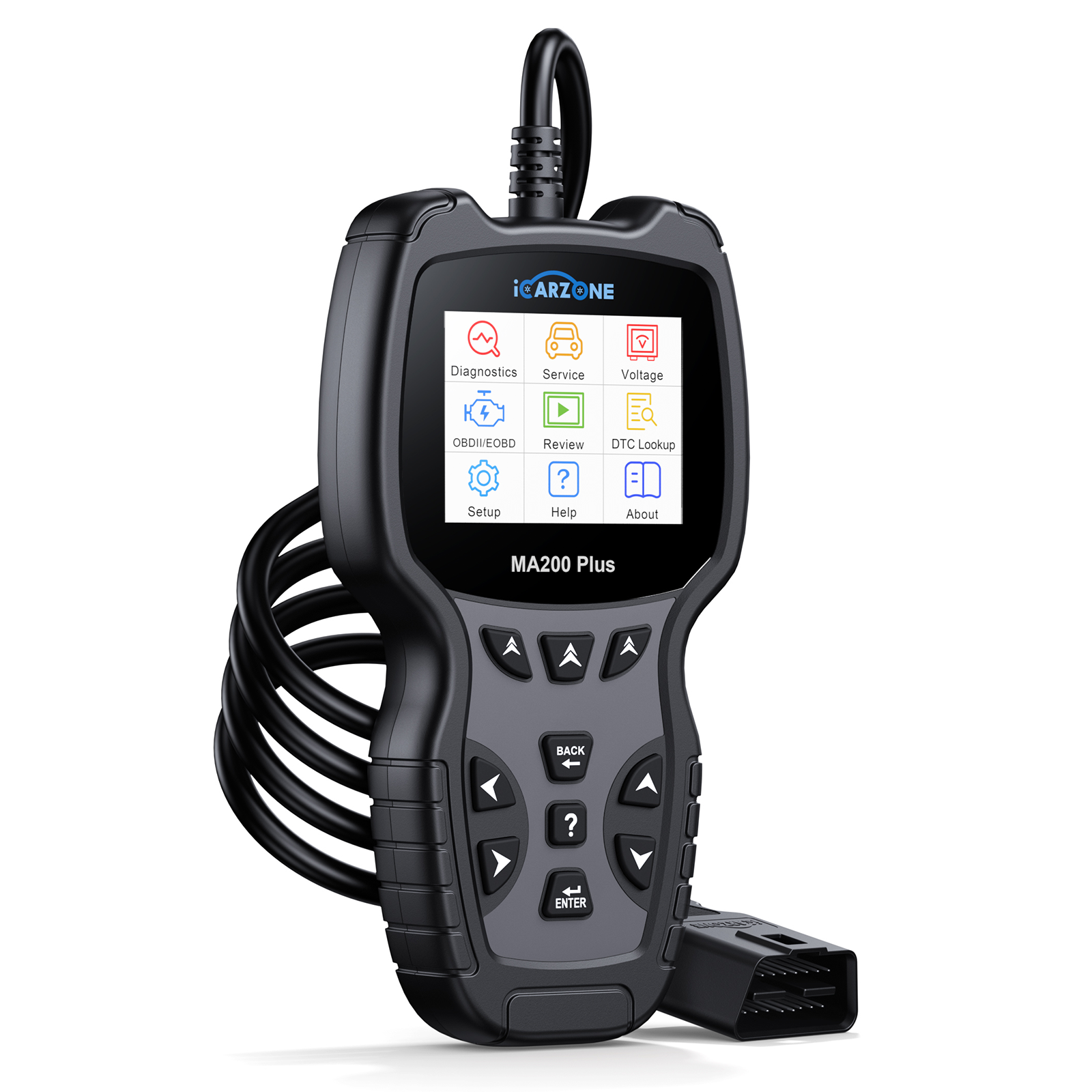P0300: Fix Random Misfire in 2015-2020 Ford F-150: ICARZONE UR1000 Diagnose GUIDE
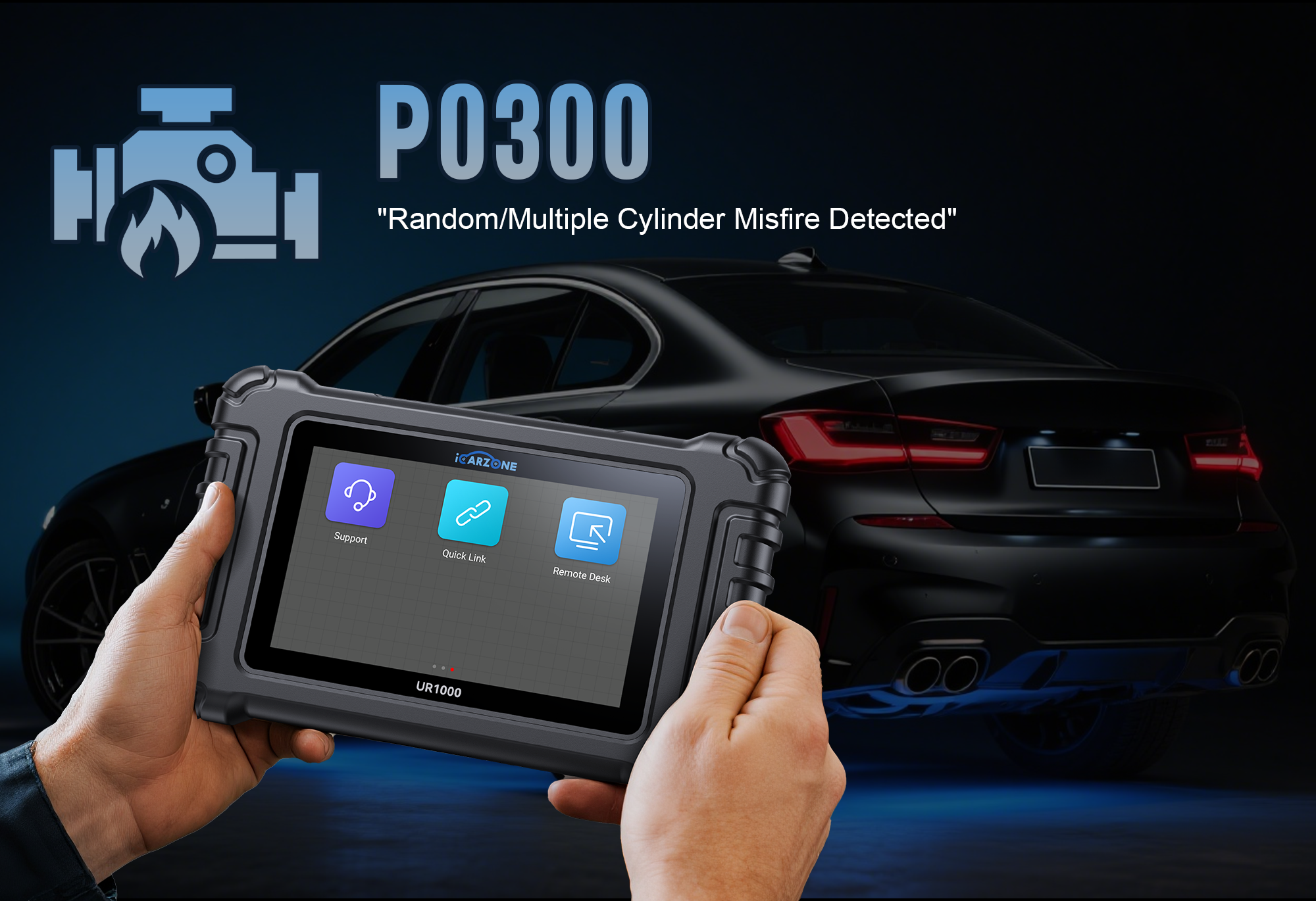
P0300: Fix Random Misfire in 2015-2020 Ford F-150
Diagnose and repair P0300 (Random/Multiple Cylinder Misfire) in your 3.5L EcoBoost F-150 with ICARZONE UR1000—save $300+ on dealer diagnostics.
Fix F-150 P0300 with UR1000Table of Contents
1. What is P0300 in Ford F-150 3.5L EcoBoost?
P0300 is an OBD-II diagnostic trouble code (DTC) defined as “Random or Multiple Cylinder Misfire Detected”. For the 2015-2020 Ford F-150 equipped with the 3.5L EcoBoost V6 engine, this code indicates that the Engine Control Module (ECM) has detected inconsistent combustion in one or more cylinders—but cannot isolate the exact cylinder(s) (unlike cylinder-specific codes like P0301 or P0302).
The 3.5L EcoBoost engine (Ford’s twin-turbocharged V6) relies on precise fuel delivery, ignition timing, and airflow to produce its 375 HP and 470 lb-ft of torque. A misfire occurs when a cylinder fails to burn fuel efficiently, disrupting this balance. For F-150 owners—especially those who use their trucks for towing or heavy hauling—P0300 is more than a nuisance: it can reduce towing capacity by 10-15%, cut fuel economy by 4-6 MPG, and even damage the turbochargers over time.
F-150 EcoBoost Specific: The 2017-2020 F-150 3.5L EcoBoost uses Ford’s Gen 2 EcoBoost engine, which has updated fuel injectors and ignition coils. However, it remains prone to P0300 due to higher cylinder pressures (up to 2,100 PSI) that stress these components.

2. Top Causes of P0300 in 2015-2020 Ford F-150 3.5L EcoBoost
P0300 in the F-150 3.5L EcoBoost is rarely caused by a single issue. Based on Ford service data and F-150 owner forums (like F150Forum.com), these are the most common root causes—ranked by frequency:
| Cause | Frequency in F-150 EcoBoost | Why It Triggers P0300 | Typical Mileage When It Occurs |
|---|---|---|---|
| Failing Ignition Coils | 38% | Gen 2 EcoBoost coils (Ford part #BL3Z-12029-A) overheat under load, causing intermittent spark loss. | 65,000-85,000 miles |
| Clogged/Leaking Fuel Injectors | 27% | Direct-injection injectors (Ford #CM5E-9K546-AA) clog with carbon buildup or leak, disrupting fuel spray. | 70,000-90,000 miles |
| Intake Manifold Gasket Leak | 15% | Plastic intake gaskets degrade, allowing unmetered air into the combustion chamber (lean condition). | 55,000-75,000 miles |
| Turbocharger Boost Leak | 12% | Intercooler hoses crack or turbo wastegate sticks, causing inconsistent boost pressure (common in towing trucks). | 80,000-100,000 miles |
| PCV System Failure | 8% | Positive Crankcase Ventilation (PCV) valve sticks, creating excessive crankcase pressure and oil contamination. | 60,000-80,000 miles |
Real F-150 Owner Case: A 2018 F-150 Lariat 3.5L EcoBoost with 72,000 miles started showing P0300 when towing a 5,000-lb trailer uphill. Using ICARZONE UR1000’s Live Data function, the owner observed dropouts in spark voltage from cylinders 2 and 5. Replacing all 6 ignition coils (Ford OEM #BL3Z-12029-A) resolved the misfire—costing $240 DIY vs. $650 at a Ford dealer.
3. Key Symptoms of P0300 in Ford F-150 3.5L EcoBoost
P0300 symptoms in the F-150 3.5L EcoBoost often worsen under load (towing, hauling, or acceleration)—a pattern tied to the engine’s turbocharged design. Here’s how to identify the issue:
Driving Symptoms
- Loss of power: Noticeable hesitation when accelerating, especially above 2,500 RPM (turbo boost range).
- Reduced towing capacity: Truck struggles to maintain speed with a trailer, even on mild grades.
- Poor fuel economy: Drop from 17-19 MPG (highway) to 12-15 MPG.
- Engine surging: RPM fluctuates at idle or steady speed (common when injectors are clogged).
Mechanical/Audible Symptoms
- Rough idle: Vibration felt in the steering wheel and cab (worse when engine is cold).
- Knocking/pinging: Detonation in cylinders due to lean fuel mixture (from intake leaks).
- Turbo “chatter”: Abnormal noise from turbochargers (signals boost leak).
- Check Engine Light (CEL): Illuminates solid or flashes (flashing = severe misfire, stop driving).
Critical Warning: If your F-150’s CEL is flashing with P0300, stop driving immediately. A flashing CEL indicates a severe misfire that can damage the catalytic converters (costing $1,200+ to replace on the 3.5L EcoBoost).
4. Diagnose P0300 in F-150 3.5L EcoBoost with ICARZONE UR1000
Ford dealers charge $150-$200 to diagnose P0300, but you can do it yourself in 30 minutes with the ICARZONE UR1000—a scanner optimized for Ford vehicles. The UR1000 accesses the F-150’s ECM directly, providing EcoBoost-specific data that generic scanners miss.
Step-by-Step Diagnosis with UR1000
| Step | UR1000 Function | What to Do (F-150 Specific) | How to Interpret Results |
|---|---|---|---|
| 1 | Full System Scan | Connect UR1000 to F-150’s OBD-II port (under dashboard, driver’s side). Select “Ford” > “F-150” > “2015-2020” > “3.5L EcoBoost” > “Engine.” | Confirm P0300; check for related codes (P0299 = boost leak, P0171 = lean condition). |
| 2 | Live Data Stream | Select “EcoBoost Specific Data” > Monitor:
|
Normal: Coil voltage = 12-14V; Boost = 15-20 PSI (towing). Abnormal: Coil voltage drops <10V (bad coil); Boost <12 PSI (leak). |
| 3 | Cylinder Balance Test | Select “Active Tests” > “Cylinder Balance.” UR1000 disables each cylinder sequentially. | Identify weak cylinders (little/no RPM drop when disabled)—indicates misfire source. |
| 4 | Ford TSB Lookup | Enter F-150’s VIN > Select “Technical Service Bulletins.” | Check for TSB 19-2247 (2017-2020 F-150): Addresses P0300 from faulty fuel injectors. |
| 5 | Boost Leak Test | Select “EcoBoost Tests” > “Boost Leak Detection.” UR1000 controls turbo wastegate to pressurize the system. | Pressure drop >2 PSI in 30 seconds = leak (check intercooler hoses and turbo gaskets). |
5. Step-by-Step P0300 Repairs for F-150 3.5L EcoBoost
Once you’ve identified the cause with UR1000, follow these F-150-specific repair steps. All procedures use Ford OEM parts (critical for EcoBoost reliability):
Repair 1: Replace Ignition Coils (Most Common Fix)
- Ensure engine is cool (allow 2+ hours after running).
- Disconnect the negative battery terminal (10mm wrench).
- Locate the ignition coils: 3 on the driver’s side, 3 on the passenger’s side of the engine (each sits on top of a spark plug).
- Press the tab on the coil’s electrical connector and pull to disconnect.
- Remove the 8mm bolt securing the coil to the cylinder head.
- Gently pull the coil straight up to remove (use a coil puller if stuck).
- Install new Ford OEM coils (#BL3Z-12029-A) – replace all 6 (mixing old/new coils causes uneven performance).
- Reinstall bolts (torque to 5 Nm) and connectors.
- Reconnect battery and use UR1000 to clear codes and run “Ignition System Relearn.”
Repair 2: Clean/Replace Fuel Injectors
- Relieve fuel pressure: Remove the fuel pump fuse (located in the engine bay fuse box) and start the engine until it stalls.
- Remove the engine cover (4 Torx T30 screws).
- Locate the fuel rail (runs across the top of the engine) – injectors are attached to the rail.
- Disconnect the fuel rail’s electrical connector and fuel lines (use a fuel line disconnect tool).
- Remove the 10mm bolts securing the fuel rail and lift gently to access injectors.
- For clogged injectors: Use a Ford-approved fuel injector cleaner (Motorcraft PM-22-A) in a cleaning machine.
- For leaking injectors: Replace with Ford OEM injectors (#CM5E-9K546-AA) – include new O-rings.
- Reinstall fuel rail (torque bolts to 8 Nm) and reconnect lines/connector.
- Reinstall fuel pump fuse and use UR1000 to run “Fuel Injector Calibration.”
Repair 3: Fix Intake Manifold Gasket Leak
- Drain engine coolant (remove the petcock on the radiator).
- Remove the intake manifold cover (Torx T25 screws).
- Disconnect the throttle body, EGR valve, and vacuum lines from the intake manifold.
- Remove the 10mm bolts securing the intake manifold (follow Ford’s torque sequence: center-out).
- Lift the manifold and scrape off old gasket material (use a plastic scraper to avoid damaging the surface).
- Install a new Ford OEM intake manifold gasket set (#BL3Z-9439-A).
- Reinstall the manifold (torque bolts to 10 Nm in 3 stages: 5 Nm, 8 Nm, 10 Nm).
- Reconnect all components and refill coolant with Ford-approved antifreeze (Motorcraft VC-7-B).
- Use UR1000’s “Intake Leak Test” to verify the repair.
6. P0300 Repair Costs: DIY vs. Ford Dealer (F-150 3.5L EcoBoost)
Repair costs for P0300 in the F-150 3.5L EcoBoost vary widely based on the cause and whether you do the work yourself. Here’s a detailed breakdown:
| Repair Type | DIY Cost (Parts + Tools) | Ford Dealer Cost (Parts + Labor) | DIY Time Required |
|---|---|---|---|
| Ignition Coil Replacement (6 coils) | $240-$300 (Ford OEM coils: $40-$50 each) | $650-$800 (labor: $100/hour x 3 hours) | 1.5-2 hours |
| Fuel Injector Cleaning | $80-$120 (cleaner + rental machine) | $300-$400 (labor: $100/hour x 2 hours) | 1-1.5 hours |
| Fuel Injector Replacement (6 injectors) | $480-$600 (Ford OEM injectors: $80-$100 each) | $1,200-$1,500 (labor: $100/hour x 5 hours) | 3-4 hours |
| Intake Manifold Gasket Replacement | $150-$200 (gasket set + coolant) | $800-$1,000 (labor: $100/hour x 6 hours) | 4-5 hours |
| Boost Leak Repair (hoses/gaskets) | $50-$100 (hoses + clamps) | $350-$500 (labor: $100/hour x 2.5 hours) | 1-2 hours |
| Diagnosis Only | $0 (with ICARZONE UR1000) | $150-$200 | 30 minutes |
Cost Savings Tip: The ICARZONE UR1000 pays for itself in one repair. For example, diagnosing and replacing ignition coils DIY saves $410-$560 vs. dealer service—more than covering the UR1000’s cost.
7. Prevent P0300 in Your Ford F-150 3.5L EcoBoost
The 3.5L EcoBoost engine is robust, but proactive maintenance can prevent P0300 and extend its lifespan—critical for F-150 owners who rely on their trucks for work or recreation. Follow these Ford-recommended tips:
- Use High-Quality Fuel: Fill up with 91-octane gasoline (minimum). Lower octane causes detonation, which stresses ignition coils and injectors. Avoid stations with frequent complaints of contaminated fuel.
- Change Oil Every 5,000 Miles: Use Ford Motorcraft 5W-30 full-synthetic oil (#XO-5W30-QSP). Old oil increases engine wear and can contaminate the PCV system.
- Replace Ignition Coils Proactively: Swap coils at 70,000 miles (even if no symptoms) – Gen 2 EcoBoost coils degrade gradually. Use only Ford OEM coils (#BL3Z-12029-A) – aftermarket coils fail 2x faster.
- Clean Fuel Injectors Annually: Use Motorcraft Fuel Injector Cleaner (#PM-22-A) every 10,000 miles. For towing trucks, do a professional cleaning at 60,000 miles.
- Inspect Intake/Boost System: Check intercooler hoses and intake gaskets every 30,000 miles. Tighten loose clamps and replace cracked hoses immediately.
- Run UR1000 Health Checks: Use the UR1000’s “EcoBoost Health Scan” every 15,000 miles to catch pending issues (e.g., weak coils, low fuel pressure) before they trigger P0300.
- Avoid Short Trips: The EcoBoost engine needs to reach operating temperature (195°F) to burn off carbon buildup. If you use your F-150 for short trips, take it on a 20-minute highway drive weekly.
8. Ford F-150 3.5L EcoBoost P0300 FAQs
Can I drive my F-150 with P0300?
If the CEL is solid (not flashing) and symptoms are mild (no severe hesitation), short drives (under 20 miles) are okay. But avoid towing or heavy loads—this worsens misfires and risks turbo damage. Fix P0300 within a week.
Will P0300 fail my F-150’s emissions test?
Yes. P0300 causes incomplete combustion, which increases hydrocarbon emissions. Most states will fail an emissions test if the CEL is on or P0300 is stored (even if cleared recently).
Why does P0300 only happen when towing?
Towing increases EcoBoost engine load: ignition coils run hotter, fuel injectors work harder, and boost pressure rises. Weak components (e.g., aging coils) that work fine at idle fail under this stress—triggering P0300.
Does Ford cover P0300 under warranty?
New F-150s have a 3-year/36,000-mile basic warranty and 5-year/60,000-mile powertrain warranty. If P0300 is caused by a defective part (e.g., injectors covered by TSB 19-2247), Ford may cover repairs—even outside basic warranty.
Can fuel additives fix F-150 P0300?
Only if P0300 is caused by mild injector clogging. Use Ford Motorcraft Fuel Injector Cleaner (#PM-22-A) – it’s formulated for EcoBoost direct injection. If the issue is bad coils or leaks, additives won’t help.
Is the ICARZONE UR1000 easy to use for F-150 P0300?
Yes. The UR1000 has a “Ford F-150 P0300 Diagnostic Wizard” that guides you through testing step-by-step—no prior experience needed. It also includes video tutorials for EcoBoost-specific repairs.
Fix P0300 in Your Ford F-150 3.5L EcoBoost Today
The ICARZONE UR1000 is the only scanner designed for F-150 EcoBoost owners. It diagnoses P0300 in 30 minutes, saves you $300+ on dealer costs, and includes lifetime Ford TSB updates.
Buy ICARZONE UR1000 Now

